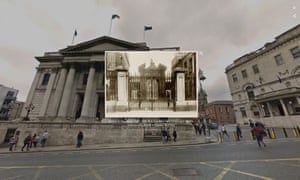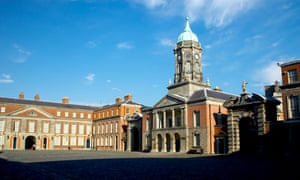A Google Maps tour of Dublin, narrated by Colin Farrell, takes the virtual tourist to key landmarks linked to the 1916 Easter Rising. Plus we pick some of the best guided tours and pubs if you’re visiting for real
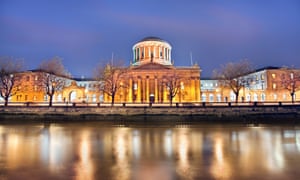
“Aterrible beauty is born.” Only William Butler Yeats could reconcile the catalyst for modern-day Ireland with the brutal fallout from the 1916 Easter Rising in five simple words. He was right of course. The sequence of events that followed on from that Easter Monday when rebellious men and women took hold of Dublin changed the mindset of a nation. Within six years Arthur Griffith was elected president of Dáil Éireann (the assembly of Ireland) and a new nation was created.
A hundred years later and Ireland has come of age; 2016 is all about commemorating the Easter Rising. For anyone visiting the Emerald Isle it will be hard to miss the centenary salutes throughout the year.

Most of the activity will centre on the capital, culminating in the synchronised laying of wreaths in locations around the city from Dublin Castle to the Garden of Remembrance. The GPO (General Post Office) building at the core of the capital and the rising was destroyed in 1916. It was restored in stages and from this year will house the 17,200 sq ft
One particularly innovative marker of the centenary has been created by Google Maps. It’s called Dublin Rising and features the voice of actor Colin Farrell taking visitors on an online ramble through the modern streets of the Irish capital. It peels back the events on that Easter Monday with the click of a mouse, by linking the rising to 22 strategic locations. It features rare and previously unseen footage.
The head of the Irish government, taoiseach Enda Kenny labelled Dublin Rising a “time machine” at its launch. Google, now with a major data processing centrealongside its European HQ in Dublin, worked with academics, historians and museums around the city to provide graphics and stories from archive sources. It highlights the significance and fate of these landmarks during and after the rising.
The 1,200 rebels who stormed Dublin on Easter Monday 1916 were led by poets, academics and emerging politicians such as Michael Collins and Éamon de Valera. Poetry and verse have helped keep memories of these figures fresh so it comes as no surprise that Dublin is a Unesco city of literature.
If following all of Colin Farrell’s associated locations of the Easter Rising carves too much time from your Dublin itinerary, whittle it down to the four most important landmarks.
Dublin Castle
This was Dublin’s military stronghold at the time and the first of the rising’s failures, when an element of the Citizen Army failed to press home their initial attack. In the following years, however, the castle was at the epicentre of the independence struggle.
Today Visitors can take advantage of the free admission to the Chester Beatty Library, a European Museum of the Year winner, during a visit to the castle. Its collection of medieval and renaissance manuscripts is famous – among them is one of the first illustrated volumes of the Life of the Prophet.
GPO
Rebel leader Padraig Pearse and his contingent captured the building and hung the Irish tricolour outside. He read the proclamation for a new state and held the building until he was forced to evacuate.
Today: With the opening of the GPO Witness History exhibition in March, the site should be on the to-do list of every visitor with an interest in history. There is also a statue at the GPO of the mythological pre-Christian era hero Cúchulainn, tied upright against a tree; it was put up as a symbol in honour of the Rising.
Kilmainham Gaol
The rebel leaders were taken here after the rising failed. Future president Éamon de Valera (played by the late Alan Rickman in the movie Michael Collins) was held there at the time. Sixteen of the commanding officers and proclamation signatories were executed; mostly at this prison with many of them then being interred at Arbour Hill Cemetery.
Today:Kilmainhaim Gaol is one of the most visited tourist attractions in Ireland. It’s among the largest unoccupied prisons in Europe and offers an incredible insight on the country’s turbulent past.
Four courts
Rebel commandant Ned Daly’s 1st battalion gained control of the courts when capturing the area around Christchurch. He was executed by the British in the aftermath. The building would be largely destroyed some years later – and faithfully restored again.
Today: The Four Courts – housing the supreme court, high court and Dublin circuit court – dominate the river Liffey’s landscape. Its dome is one of the most recognisable landmarks in Dublin.
MORE WAYS TO EXPLORE THE CITY
1916 rebellion walking tour
If the rugged voice of Colin Farrell through your headphones doesn’t work for you, there’s an organised walk from 11.30am every day in season (restricted to weekends from November to March). The tour leaves from the International Bar, Wicklow Street, takes two hours and costs €13pp. The tour guide respond to questions – Colin can’t do that; not online anyway.
Viking Splash Tour

This tour (adult €22, child (2-12) €12, teenager €17), departing from Stephen’s Green North, makes for an exciting way to see the city. It’s a duck tour, aboard a second world war amphibious vehicle that dips in and out of the river Liffey. Passengers become Viking invaders for the trip and the guide likes to interact with unsuspecting members of the public. Wear warm clothes and a waterproof jacket; it can get chilly on the water. The tours run every half hour between 10am and 3.30pm most days.
And now for a pint of the black stuff
Ireland’s capital is awash with history but no visit would be complete without a sample of the black stuff. If literature is the soul of Dublin, then Guinness is the blood that has run through its veins for over 250 years. The best way to sample both is in the pub, a pivotal cornerstone of Irish society for centuries.
Toner’s Pub
“The problem with some people is that when they aren’t drunk they’re sober.” At least that’s what WB Yeats thought. Toner’s was the pub of choice for the great poet when he was in town.
• 139 Baggot Street, tonerspub.ie
Horseshoe Bar, Shelbourne Hotel
“A man can never have too much red wine, too many books, or too much ammunition.” So said Rudyard Kipling. He was partial to one of Ireland’s most iconic properties when in town, as were many of the visiting literati throughout the years, including William Makepeace Thackeray.
• The Shelbourne Hotel, 27 St Stephen’s Green, shelbournedining.ie/the-horseshoe-bar
McDaids
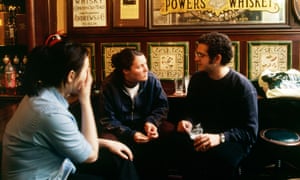
“I am a drinker with writing problems.” Poet, novelist and playwright Brendan Behan may have reached this conclusion on one of his many visits to McDaids. He was in good company. It has been a hub for poets and writers for many years.
•3 Harry Street, +353 1 679 4395, @McDaidsPub
Davy Byrnes
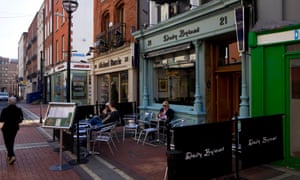
“He entered Davy Byrnes. Moral pub. He doesn’t chat. Stands a drink now and then.” So wrote James Joyce of the fictional protagonist of Ulysses, Leopold Bloom. He was a regular at Davy Byrnes, as was the great writer himself; they were both partial to the pub’s gorgonzola sandwiches, which are still on the menu.
• 21 Duke Street, davybyrnes.com
The Bailey
“The mind maybe impaired by alcohol, I mused, but withal it may be pleasantly impaired,” wrote novelist and playwright Flann O’Brien. He was a Bailey regular, along with Patrick Kavanagh, Oliver St John Gogarty, James Joyce and poet Padraic Colum. After a night on the black stuff you may not feel quite as poetic the following morning. There’s no better way to shed the cobwebs from the night before than with a blast of rain-fresh Dublin air and a stretch of the legs.
• 1-4 Duke Street, baileybarcafe.com
Getting around independently
Forget driving in Dublin. Traffic slows to a snail’s pace in the city centre but bus lanes mean that buses are viable, especially with the Hop On Hop Off service (all-day from €18.70 adult, €8.50 child), which is also a good way to see the city’s main tourist sights.

